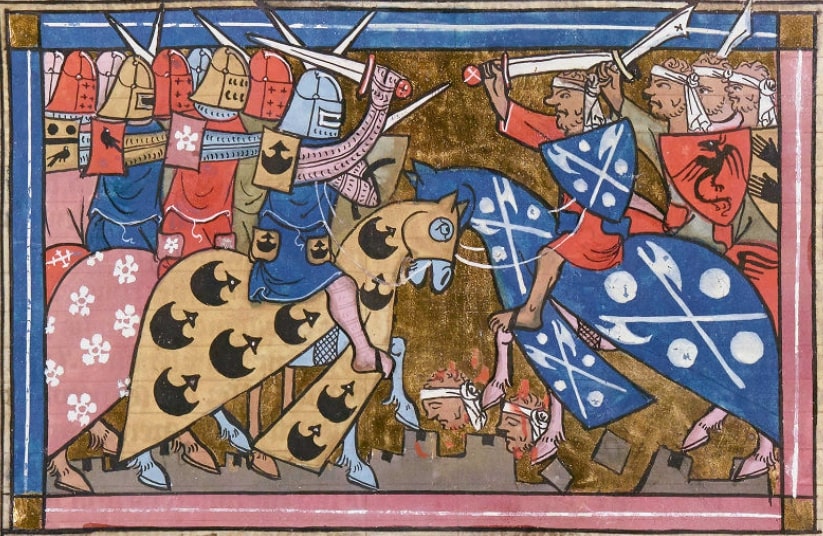 oycott is a prohibition declared against an individual or a social group, which establishes the refusal to buy, sell, or maintain any kind of relationship with those subject to this procedure. This demonstration started with a single man, Charles Cunningham Boycott (1832–1897), an Irish landowner against whom the peasants of his estate organized, for the first time in history, a boycott.
oycott is a prohibition declared against an individual or a social group, which establishes the refusal to buy, sell, or maintain any kind of relationship with those subject to this procedure. This demonstration started with a single man, Charles Cunningham Boycott (1832–1897), an Irish landowner against whom the peasants of his estate organized, for the first time in history, a boycott.
In March 1832, in Norfolk, England, a man was born whose name would go down in history as an independent word that is used extensively in today’s society. As a child, Charles Cunningham Boycott was drawn to military life, so he decided to enroll in the Military Academy in 1848, from which he was expelled a year later because he failed an exam.
However, because his family was wealthy, they helped him reach the command of the 39th Regiment, which moved to Belfast and then to Dublin, where Boycott got married. In 1852, he was forced to withdraw from military life but remained in Ireland. After retiring from the army, Charles Boycott became an agent for the Earl of Erne, John Crichton, who owned over 40,000 acres of land. The count offered him a farm with 629 acres of land, as well as other lands near Neale, Co. Mayo, with fertile soils and a ruined castle.
The first Boycott in history
The area led by Boycott was called Lough Mask. Boycott’s job was to collect the rents of 35 peasants and oversee the general condition of the land. But Boycott was very strict with the tenants, being considered a tyrant by the locals. It seems that those who worked on the farm also collected fallen wood for themselves and took shortcuts around the farm, and Boycott was careful to reduce these minor privileges.
Everything went well until 1879 when a crisis arose in agriculture and famine became a real threat, which led the peasants to demand lower rents. Led by Charles Cunningham Boycott and Michael Davitt, the workers created the Irish Land League that year, and a year later, in 1880, they asked Boycott for 25% less rent. Boycott, however, denied the request. In addition to Parnell and Davitt, it was Father O’Malley who advised all locals not to become involved in Boycott’s land activities.

The Irish Land League branch in Mayo told Boycott’s employees to stop working and began a campaign to isolate him. They no longer worked the land, did not talk to Boycott at all, did not sit next to him in church, and did not serve him in any way. Speaking to the locals, Charles Parnell asked what to do with Boycott, and the crowd demanded that he be killed. But Parnell proposed a “more Christian and indulgent method” that would give the owner a chance to repent, as Thomas Hachey, Joseph Hernon, and John Lawrence write in The Irish Experience: A Concise History.

The entire demonstration against Boycott was documented by journalist and anti-slavery activist James Redpath. In September 1880, he had a discussion with Father O’Malley in which he complained that he could not use the verb to describe what happened because people did not know the word. The father gave him the word “boycott,” as Joyce Marlow writes in Captain Boycott and the Irish.

After leaving Ireland, Boycott and his family visited the United States where the New York Tribune wrote that “the arrival of Captain Boycott, who involuntarily added a new word to the language, is an event of national interest.” The newspapers wrote that Boycott had taken security measures, registering as Charles Cunningham.
Boycott’s legacy
A few months later, he returned to England where he worked on Hugh Adair’s estate and where he enjoyed his passion for horse racing. In early 1897, his health became precarious, and on June 19, 1897, at the age of 65, he died in Flixton. Ironically, the funeral service was held by his nephew, Arthur St John Boycott, who was visiting him when the Lough Mask demonstration took place.
Since then, boycotts have been happening more and more recently. We always see popular brands taking the name of their creators, but rarely do we see verbs carrying the name of someone.
Avid Writer with invaluable knowledge of Humanity!
Upcoming historian with over 30 million views online.
“You make your own life.”





